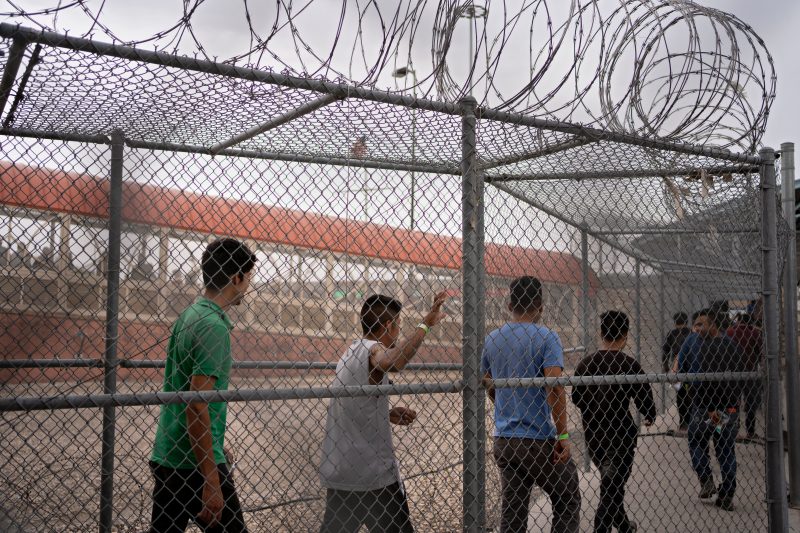
In May, House Republicans advanced and passed H.R. 2, legislation that was billed as the Secure the Border Act of 2023. It included measures aimed at reducing the number of migrants crossing from Mexico into the United States, including expanding construction of a wall on the border and drastically restricting the ability to seek asylum. It was what Republicans over the past few weeks have insisted was unnecessary: new legislation focused on addressing the increase in immigration. The Democratic-controlled Senate didn’t take it up.
By the fall, Republican leadership shifted its approach: If Democrats wanted more money to aid Ukraine in its war against Russia, they would need to make concessions on the border. On the Senate side, a group of three legislators — Sens. James Lankford (R-Okla.), Chris Murphy (D-Conn.) and Kyrsten Sinema (I-Ariz.) — began working on a legislative package that would fulfill that desired outcome. The White House was looped in and supportive.
The senators made the proposal public this month. Almost immediately, it was shredded — by Republicans. When it came up for a vote last week, it failed largely because of Republican votes. On the other side of Capitol Hill, Speaker Mike Johnson (R-La.) refused to even consider it.
There are a lot of reasons that Republicans decided against backing the compromise proposal, including that they would rather try to force the Senate to take up H.R. 2. But one is that many in the Republican caucus see the border as a potent issue for the general election.
Among those lambasting the compromise was Donald Trump, almost certainly the Republican nominee for president in November. He declared on social media that “[o]nly a fool, or a Radical Left Democrat, would vote for this horrendous Border Bill,” calling it “a Death Wish for The Republican Party.” Senate Minority Leader Mitch McConnell made clear in private that he saw this as a death knell for the bill.
It is objectively the case, then, that this compromise, containing new restrictions that would normally be opposed by Democrats, collapsed because of Republican opposition and the outside agitation from Trump that aimed toward that conclusion.
But when ABC News and Ipsos asked Americans who deserved blame for the failure of Congress to pass legislation, Biden and congressional Democrats got as much blame as Republicans. Trump got significantly less.
It is certainly true that many Americans were not paying much attention to the intricate and often-dull machinations that surrounded the compromise legislation’s development. Ipsos found that about 1 in 5 respondents simply said they didn’t know how much blame any of the participants deserved. Those who did assign blame, though, distributed it evenly.
Perhaps this was a function of deep awareness on the part of the American public about the fate of H.R. 2. Or, perhaps, it was rooted mostly in perceptions: that both sides are incapable of governing; that what is happening with the border is Biden’s fault generally, meaning that, confronted with this question, they assumed it was also his fault specifically.
This is the fundamental bind in which Biden and his party find themselves. Immigration is increasingly seen as one of the most important problems facing the country, and Biden is seen (both correctly and incorrectly at times) as the person responsible for it. So even when he backs a compromise that was once a stated target for Republican leaders, he gets the blame for Republicans submarining it.
It may be the case that, over time and as people learn more about this situation, perceptions shift. It’s likely, though, that they won’t. So Republicans will come to an obvious conclusion: There is no political downside to obstructing legislation focused on the border.
There may only be upside.

